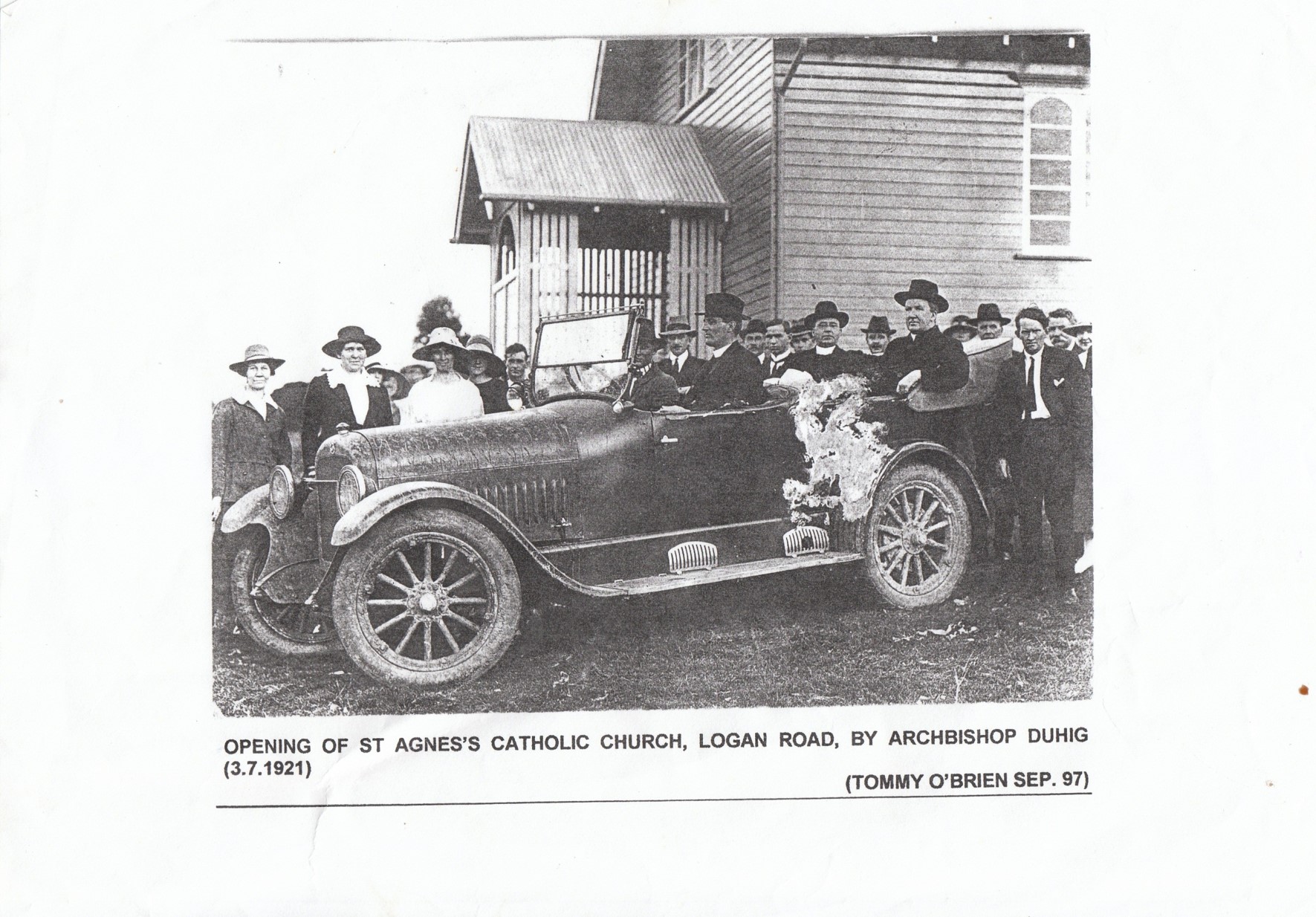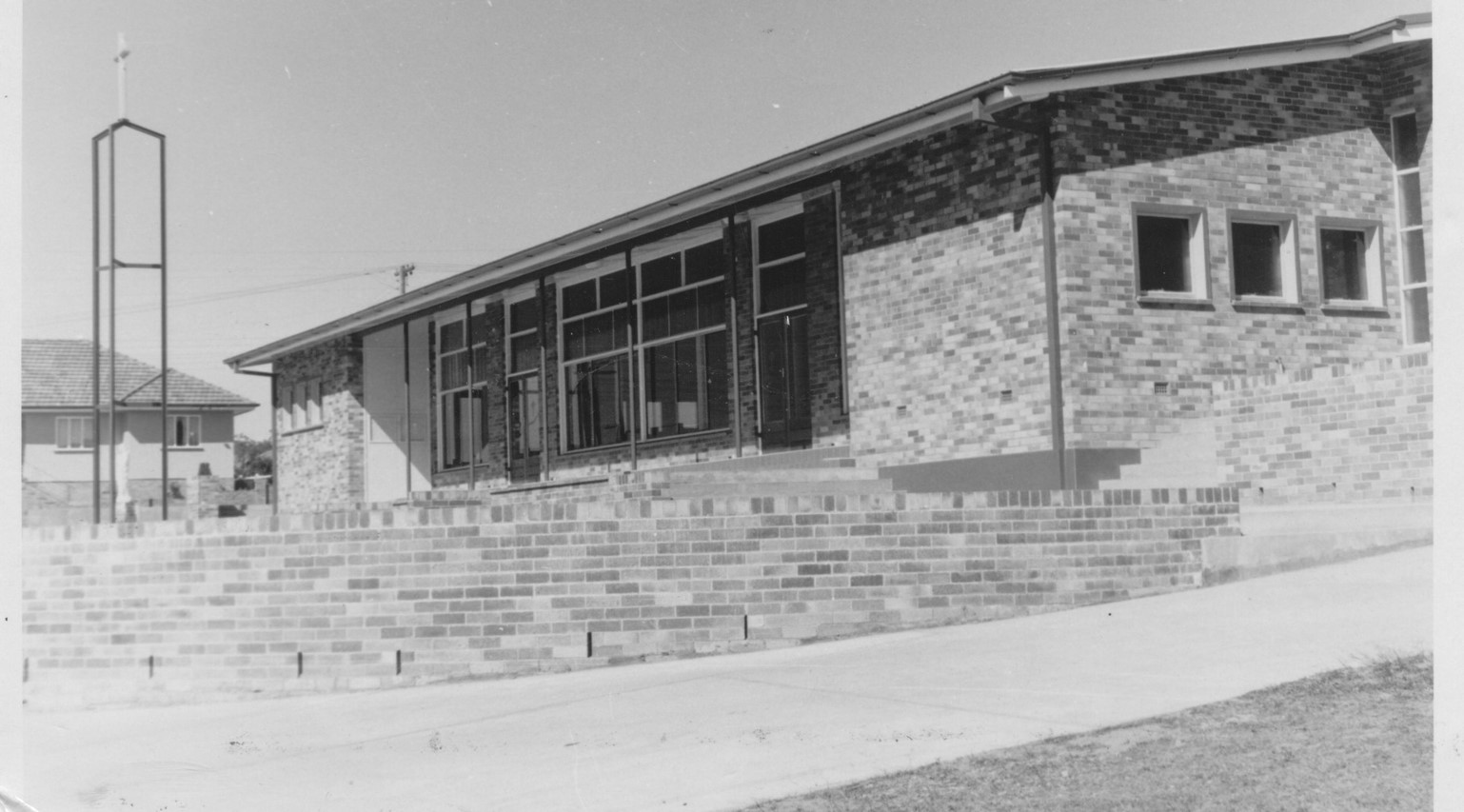Mt Gravatt and Holland Park
John Oxley sailed up the River and chose a place for a convict colony. This is where our city stands today. From the river, Oxley saw the mountain which the aborigines called Kaggur Mabul. In 1840, the British named the mountain “Mt Gravatt" after Lieutenant George Gravatt, the colony's commander. In 1860, German families came to Mt Gravatt farming dairy cows and growing grapes. Logan Road was known as Slacks Track. It became an important road to places south of Brisbane.
World War I, from 1914-1918, tested the spirit of the new nation of Australia. Soldiers returned from very sad battles in Europe and the Middle East. They needed to build new lives with their families. Streets in Holland Park, Tarragindi and Mt Gravatt were named after the places where Australians had died in battle, Gaza Rd was named after battles in Gaza in Palestine; Bapaume Rd was named after battles in Bapaume in France; Messines Ridge Rd after battles at Messines in France. After the War, some soldiers became chicken farmers along Nursery Rd.
Archbishop Duhig helped by building the first St Agnes Church in 1921.

World War II took many Australian men and women again to war both in faraway places and in lands quite near us in Asia, the Pacific and in Papua New Guinea. Fr Rosenskjar was a young priest, he was only 25 years old. He became a Padre for the soldiers at Milne Bay.
St Agnes Parish and School History
After the war, Fr Rosenskjar returned from Papua New Guinea, and lived at St Joachim's Parish, Holland Park.
In 1950, Fr Rosenskjar became the Parish Priest of the new St Agnes Parish.
A house was built to become the Presbytery.
During World War II, the Americans had built a hospital at Holland Park out of wooden army huts. After the war, many families lived in the huts.
When the families moved, Fr Rosenskjar bought two of the Huts to become St Agnes' first Hall.
In 1960, the people of the Parish helped Fr Rosenskjar, build a new St Agnes Church.
It was dedicated to all who served and died at Milne Bay during World War II.


“At last we have our Convent School! "said parents at the opening of St Agnes School, in 1962. 113 children were enrolled for Grades 1, 2 and 3 in three classrooms. There was no Government help. However St Agnes could open because of the Sisters of St Joseph. The Sisters, lay teachers, parents, children and the whole Parish worked together with hand, heart and soul.


There was no office, no staff room, no library. The toilets were out the back.
Once when there was so much rain, the children couldn't use the toilets, so all the children had to be sent home from School. The kitchen at the back of the old Army Huts became the Tuckshop.
Children walked to School, rooms were added, new toilets were built; and the P. and F. was formed to roster parents for cleaning the toilets, and to fill in the gully at the back of the school.

In 1963 , a house was carried on the back of a truck from Cavendish Road to Tudor St. The house became the Convent for the Josephite Sisters working in the School and the Parish.
Parents worked hard to build the oval over the gully at the back of the School. They needed a lot of soil. The Council was digging trenches all over Brisbane to lay pipes for a new sewerage system. Council trucks brought left-over soil to St Agnes. There were so many rocks in the soil. The children had competitions each week making piles of rocks.
Parents came weekend after weekend to take the rocks away.

St Agnes School has grown through the hard work and love of many people. Parents, parishioners, Josephite Sisters, teachers and many school officers have contributed to the wonderful school community we have at St Agnes today.